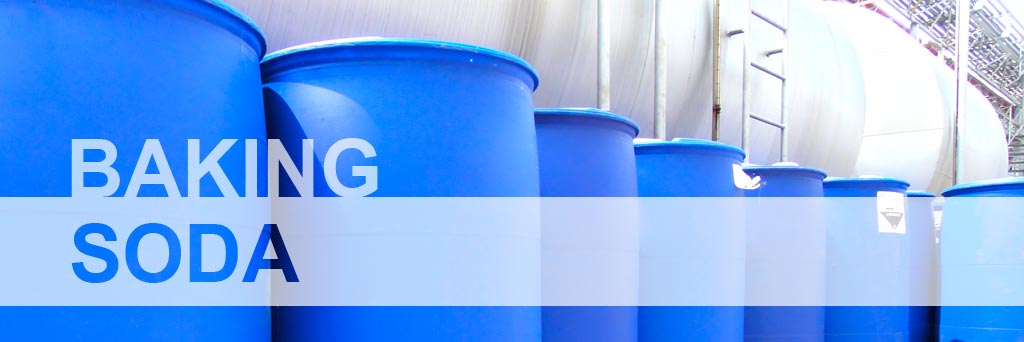| |
Baking Soda or sodium bicarbonate or sodium hydrogen carbonate is the chemical compound with the formula NaHCO3. Baking Soda is a white solid that is crystalline but often appears as a fine powder. It has a slightly salty, alkaline taste resembling that of washing soda (sodium carbonate). It is a component of the mineral natron and is found dissolved in many mineral springs. The natural mineral form, nahcolite, is found in dissolved form in bile, where it serves to neutralize the acidity of the hydrochloric acid produced by the stomach, and is excreted into the duodenum of the small intestine via the bile duct. It is also produced artificially.
Baking Soda is primarily used in cooking (baking) where it reacts with other components to release carbon dioxide, which causes dough to rise. The acidic compounds that induce this reaction include phosphates, cream of tartar, lemon juice, yogurt, buttermilk, cocoa, vinegar, etc. It can be substituted for baking powder provided sufficient acid reagent is also added to the recipe. Many forms of baking powder contain sodium bicarbonate combined with one or more acidic phosphates (especially good) or cream of tartar. It can also be used for softening peas. It is sometimes used in cooking vegetables, to make them softer, although this has gone out of fashion as most people now prefer firmer vegetables which contain more nutrients, and fibre. Bicarb destroys acids in food, including Vitamin C.
For neutralization of acids and bases, Baking Soda is amphoteric, reacting with acids and bases. Furthermore, as it is relatively innocuous in most situations, there is no harm in using excess sodium bicarbonate. Lastly, sodium bicarbonate powder may be used to smother a small fire. A wide variety of applications follows from its neutralization properties, including reducing the spread of white phosphorus from incendiary bullets inside an afflicted soldier's wounds. It can be added as a simple solution for raising the pH balance of water (increasing total alkalinity) where high levels of chlorine (2–5 ppm) are present as in swimming pools and aquariums.
For medical uses, Baking Soda is used in an aqueous solution as an antacid taken orally to treat acid indigestion and heartburn. It may also be used in an oral form to treat chronic forms of metabolic acidosis such as chronic renal failure and renal tubular acidosis. Sodium bicarbonate may also be useful in urinary alkalinization for the treatment of aspirin overdose and uric acid renal stones. It is used as the medicinal ingredient in gripe water for infants.
For personal hygiene, Baking Soda can be used as an exfoliant. Its particles are rounded and fine in texture, making it both effective and gentle on the skin. Using baking soda as an exfoliating scrub will remove dead skin cells, which can be discolored from hyperpigmentation and scarring. It is also used as an ingredient in some mouthwashes. It works as a mechanical cleanser on the teeth and gums, neutralizes the production of acid in the mouth and also as an antiseptic to help prevent infections occurring. It is also a common ingredient in alternative and natural brands of toothpaste and deodorant. It may also be used as a shampoo.
For cleaning agent, A paste from Baking Soda can be very effective when used in cleaning and scrubbing. For cleaning aluminium objects, the use of Baking Soda is discouraged as it attacks the thin unreactive protective oxide layer of this otherwise very reactive metal. A solution in warm water will remove the tarnish from silver when the silver is in contact with a piece of aluminium foil. It is commonly added to the rinse cycles of washing machines (together with the detergent) as a replacement for softener and also to remove odors. Sodium bicarbonate is also effective in removing heavy tea and coffee stains from cups when diluted with warm water. |
|



